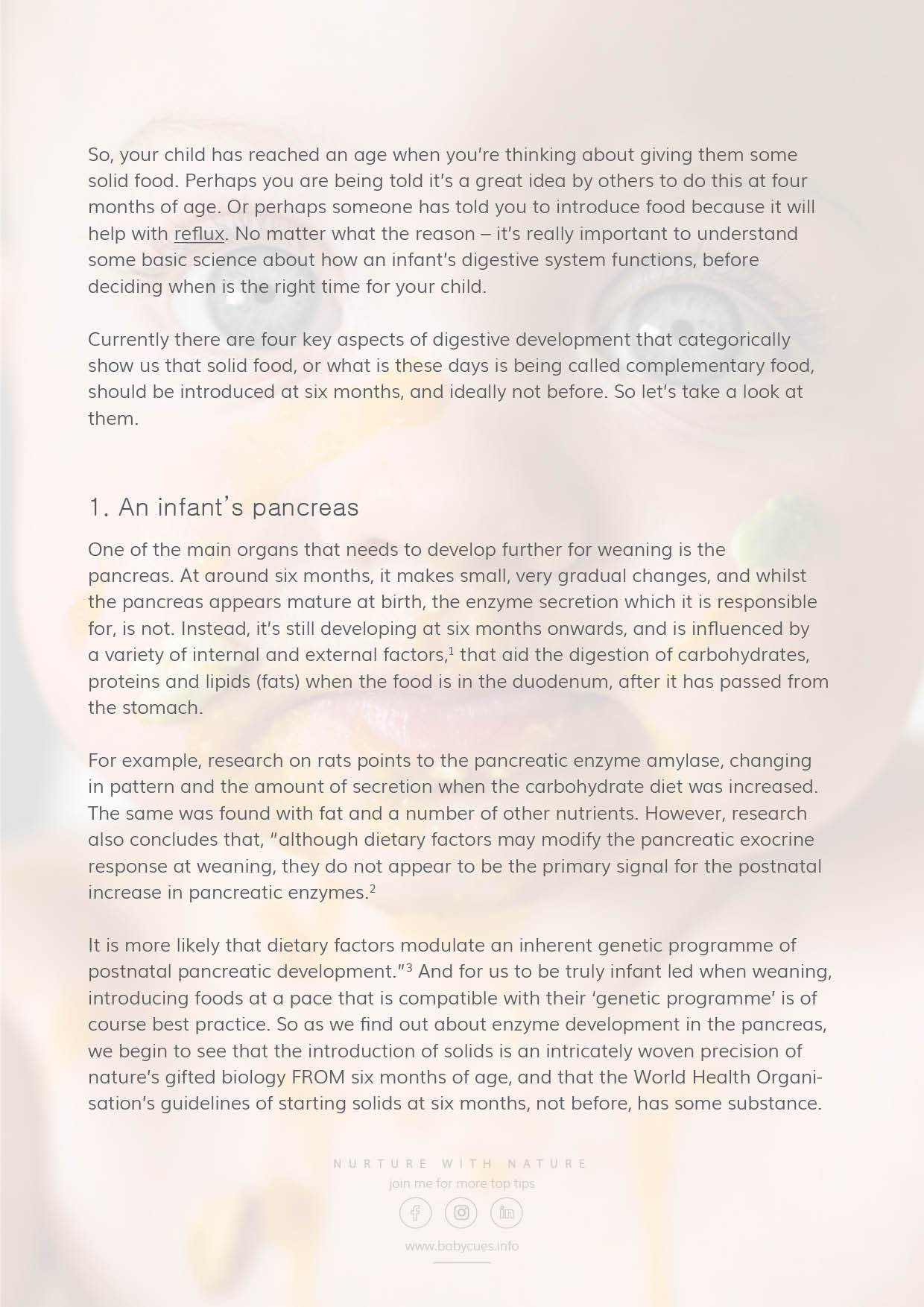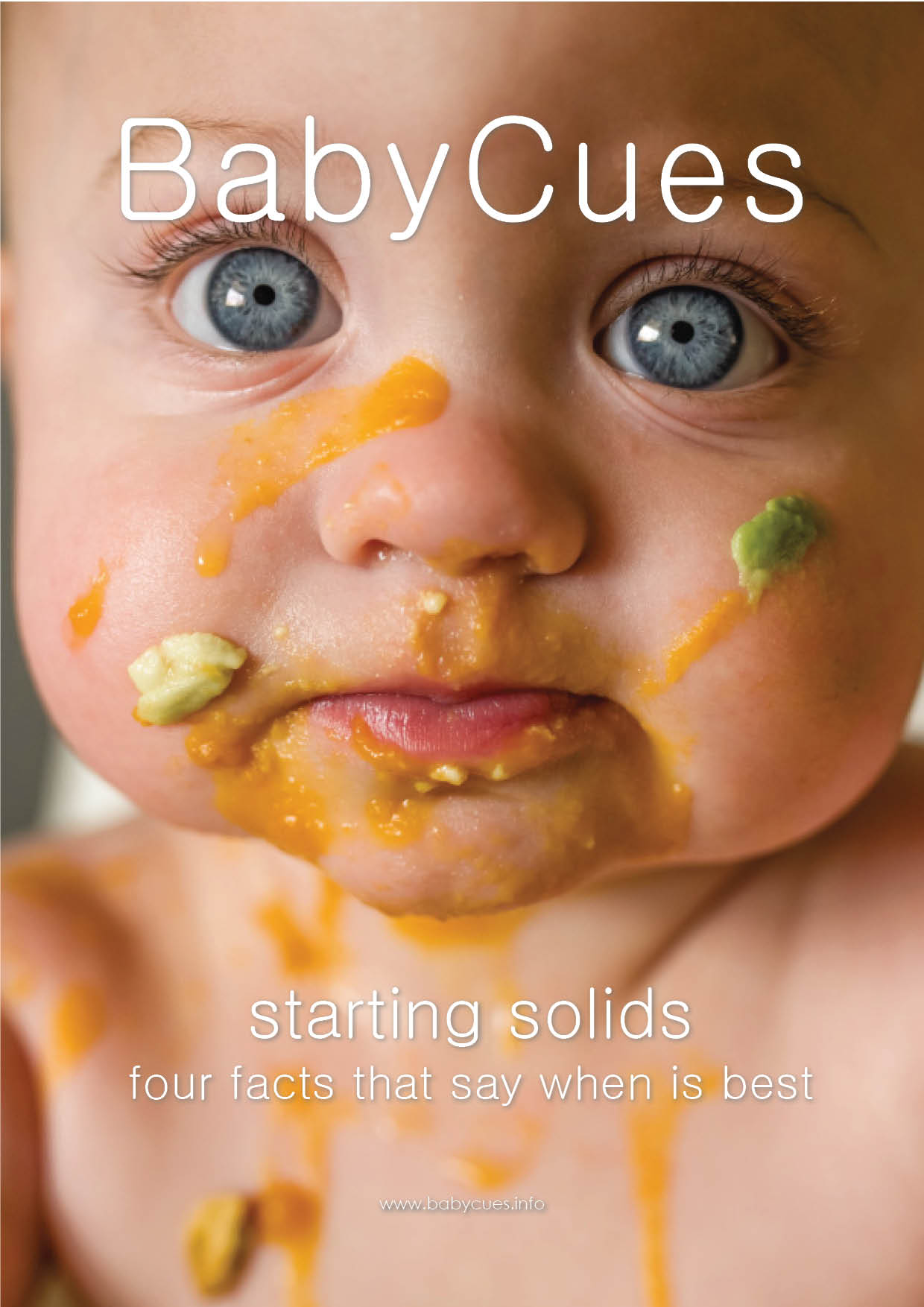Gagging on solids should not be normalised

Now yes, I know that this title is not what you are probably being told when you introduce solid food to your infant because many parents these days are told that gagging is a natural part of offering solid food. Partly this is of course right. We all know that we will gag when we our instinct tells us that we can’t swallow something, and when infants start to learn about new textures, they may gag from time to time. But these days, in my opinion, the defense reflex of gagging, which is there to stop chocking, has become over normalised largely since the unbalanced method of Baby-led Weaning took hold.
For those of you that don’t know, Baby-led Weaning advises parents to offer finger foods that are obviously chunky to infants before the age of one. Advising that if they gag on this food, not to worry, it’s normal. However, this teaching, in my opinion, has created an unnatural level of occurrence of gagging, which has led to an unbalanced drive to normalise this stress response. So how can we return our balance back to harmonising with nature? Is there research that shows us what is best? Let’s explore this and learn what the age-appropriate textures are.
What is gagging?
According to the dictionary, gagging is defined as “choking or retching.” When we look up the word choking it says, “(of a person or animal) have severe difficulty in breathing because of a constricted or obstructed throat or a lack of air.” And the word retching is defined as “make the sound and movement of vomiting.” Now, do any of these sound like something you’d want to evoke by giving your child a food that is too chunky for them to swallow? Of course it isn’t, and yet this is what is happening around the world with many parents now accepting Baby-led Weaning as a natural, responsive way to introduce solids, despite it not being led by the baby's (infant’s) natural digestive and oral development.
Keep reading for more Wind-Cues after FREE Starting Solids booklet...
Starting solids - four facts that say when is best
Must know biological facts about your infant's digestive system that clearly show you when to start solids for their ultimate health.


- Four digestive developments
- Enzyme secretion
- Absorption


WHAT'S INSIDE
- Four digestive developments
- Enzyme secretion
- Absorption
Is gagging normal?
Gagging is normal in regard to your infant knowing how to do it IF THEY NEED TO e.g. if they feel they cannot swallow something. This is nature’s design. But is it normal to place our infants in the position of needing to gag a lot just because we are giving them food that they obviously cannot swallow, which of course they are showing us through gagging – again, showing nature’s natural response to not wanting to choke.
So why rush, right? Why not respect your child’s instinctual response to choking and follow their led by not offering chunky food, instead of simply offering it because you have been told that they will “cope” with it? Is just coping enough? From my perspective, coping with something is not the same as feeling happy or naturally living.
Gagging is meant to be a reflex that is evoked when necessary. Not a reflex that happens just because we are being taught to introduce chunky solid foods before our children are ready.
Oral and digestive development
excerpt from Bio-logical Weaning Guide
BabyCues Bio-logical Weaning advice on appropriate textures stems from researched studies on the digestive system and the development of an infant’s jaw and teeth. In regard to jaw development, a review of papers entitled, “Pediatric Jaw Function: Information You Can Chew On,”1 clearly talks about the progressive ability of the jaw in infancy. Again, showing us that our infants need us to take the introduction of food slowly.
6 months2
• vertical munching has started with cycles of alternating low jaw elevation and depression.
7-12 months3
• the infant may initiate rotary chewing.
• by nine months the jaw can be held in a closed position for chewing.
• by nine months the infant can hold food between gum and teeth.
• also by nine months the infant is utilising a vertical movement with diagonal rotary jaw movement.
• followed by initial lateral mouth movements.
• then by twelve months the infant can sustain a controlled bite phase.
15-18 months3
• children are now using smooth and well-coordinated diagonal movements of the jaw.
• mixture of vertical and diagonal jaw movement.
• child can bite through hard substances with controlled bite.
• overflow movements may still be appreciated.
• child will likely open mouth more widely than needed for size of bolus.
Keep reading after the FREE Digestive Overload mini course...
24 months3
• by twenty-one months the child can bite through a hard substance with sustained controlled bite while body remains still.
• can grade jaw opening appropriate to size of bite for food.
• if presented laterally, child may turn head to that side for stronger bite.
As for the development of teeth, we know they are the first part of the digestive process for solid food. Our incisor teeth are the first to bite down on food. The canine teeth that sit beside the front teeth, then shred the food, passing it back to the bicuspids, which break it into smaller portions. The final crushing and grinding are then left to the molar teeth.
According to one paper “most infants at six months do not possess the oral function to break up soft food in their mouth and move it around in order to swallow it.”4 This is because a child’s first molars (chewing teeth) don’t usually appear until around 12-18 months. Perhaps nature is trying to tell us something here? Especially when we consider the research that chewing stimulates a nervous impulse which causes the secretion of gastric juices. Thus, preparing the digestive system for the food that is being swallowed. So, without chewing, it is highly likely that the digestive system would struggle to process chunky food.
Therefore, BabyCues Bio-logical Weaning suggests that, just as it is with the quantities, the transition to each texture is a gradual introduction. For example, as you move from the eight months sloppy puree to the slightly textured option, you would introduce one meal that is slightly textured, while keeping the other two as sloppy puree. This gives the digestive system a chance to adjust the enzyme balance required, while of course gifting your child time to get used to the new texture in the mouth, and feelings of movement that the change will bring within their gut and stools.
If you'd like more help with calming your infant's digestive discomfort, or their stools as they adjust to solids, feel free to reach out for a virtual Solids Consultation with me, or alternatively my Weaning Guide below is a great place to start too. Either way, I wish you well on what is ideally a joyful time with solid food.
1. Martins, (2002) Try it, you’ll like it! Early dietary experiences and food acceptance patterns. The Journal of Paediatric Nutrition and Development, Vol. 98, No. 12-16, pp. 18-20
2. La Leche League International Organisation website — this is a universal statement
3. Edwards D, Gould C, Mayfield E, Simon M; Pediatric Jaw Function: Information You Can Chew On
4. Delaney & Arvedson, 2008; Morris & Klein, 2000; Arvedson & Lefton-Greif, 1996
5. Arvedson & Lefton-Grief, 1996; Delaney & Arvedson, 2008; Green & Moore, 1997; Morris, S.E., & Klein, 2000



 Submitting data
Submitting data
